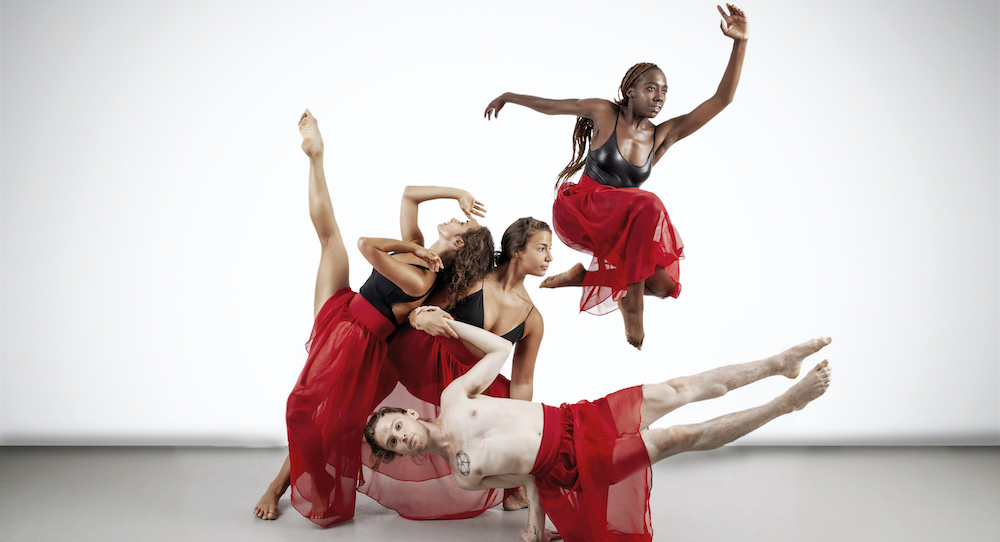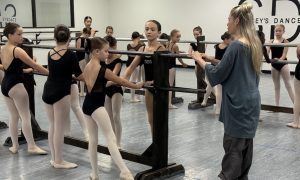August 15, 2020.
Virtually over Zoom.
Each year, the Boston Contemporary Dance Festival (BCDF) offers a space for dance artists and dance enthusiasts in Boston and the greater Northeast to gather, create, present work, learn and support one another. In 2020, that’s clearly not possible. Yet Urbanity Dance, organizer of the BCDF, found creative solutions and made it work in this challenging time — so that the festival could continue, if virtually. They are by no means the only company to do that, but nevertheless they made the virtual festival uniquely their own.
Classes and community panel discussions strengthened opportunities to experience connection and community. Betsi Graves, Urbanity Dance founding director, even encouraged participants to chat with one another in response to the works presented, through Zoom — therein offering an element of connection and community that’s not possible in a darkened theater, under the structure of theater etiquette. A section of several works previously filmed on stage and another of dance films offered a wide view of possibilities within dance art, a range perhaps not possible from a proscenium stage. Thus, in the shadow of the effect of COVID lockdown on dance, BCDF found silver threads. Perhaps in the light of those threads, we can still shine.
The stage section of the festival opens with Photo Box Cutting Room Floor (Excerpt), danced by Urbanity Dance and choreographed by Andy and Dionne Noble. What immediately comes to mind for me is a striking visual of stage light only coming through the bottom half of the backdrop. Dancers are in silhouette, moving with graceful strength through accented and then more continuous movement. The low lighting doesn’t seem to affect how they relate in space or in their own body, which I find quite impressive. Also visually enticing are the stage patterns that the Nobles created, as dancers move through them in shadowy silhouette. The dramatic, swelling instrumental score enhances the visual drama. The main memorable takeaway of the work is the visual ingenuity, although the ways bodies relate in space are also something to remember and treasure.
The following piece is Behold the Bold (Excerpt), danced by OcampoWang Dance and choreographed by Chien-Ying Wang and Paul C. Ocampo. The piece similarly opens with a compelling visual — three pairs of dancers move in their own spotlight, together in time but apart in space. Even as the three pairs seem to have no knowledge of one another, there is a synchronicity between them — in their timing, movement quality and energy. Later in the piece, the spotlights dissipate for a more fully lit-stage, and the dancers move toward and away from one another. That duality also builds a synchronicity, a balance of solitude and unity.
Their movement qualities reflect contentiousness and conflict — but also, at other times, release and resignation. A circular quality speaks to that nevertheless, some sort of harmony exists that keeps civil society humming along. I think about our inner and outer selves, who we are in the private of our own home and in our mind and the public face we put out there — all the more relevant in this age of social distancing.
The thought-provoking Deadline comes next, the first solo of the festival. Performer and choreographer Paul Giarratano moves quickly, energetically and continuously — as if having too much to move through to stop. That’s certainly relatable in the modern world, even as COVID has many of us stopping to reflect on “hustle” culture and if that’s really how we want to live. With strength, effervescence and pleasing ease, Giarratano often moves in an angular quality, making me think of automation and mechanism.
The vibrancy in his unitard costume and the lighting also have me thinking about the performance so many of us must put up, or feel we must put up, in professional spaces. The score, “A Candy Addiction” by Captive Portal, has a brightness and speed nevertheless also tinged with mystery and a dark side. All of that taken together, the piece is aesthetically pleasing and offers important food for thought — a meaningful combination that not all dance works achieve. It’s not something that’s easy to create!
Change #19: She Speaks (Excerpt), coming later in the program, is another commendably danced and choreographed solo from Lauren Putty White. Wearing deep and vibrant blue, she matches the backdrop. The color is soothing but somehow also enervating. She moves with lovely grounding, unhurried and seemingly nothing to prove one. In grace and strength, she gazes straight out to the audience with confidence in the person that she brings to the stage. Smoothly alternating between actions of lengthening and turning, as well as combining those qualities, builds harmony and grace in how she moves through space. In a time of racial reckoning, to see a woman of color move with such command and self-assurance is nothing short of uplifting and healing.
Invisible People, from choreographer Austin Warren Coats, seems similarly prescient with regards to race to me — relevant and timely in this sociocultural moment. White and black predominates through skillful lighting and spacing (lighting by Bailey Costa). A few people are in the light part of the stage while others move — in lower space, more grounded — in the shadows. Those in the light seem to move with more ease, intentionally so, as if there’s a weight that those in the shadows carry that they don’t. Apart from literal black and white, I think about marginalization in society, those rendered “invisible” by the systemic water in which we swim. Art, framed in story, can lead us to productive thought in these ways like nothing else really can.
Can’t Go on Without You (Excerpt) is maybe the most memorable performance of the stage portion of the virtual festival, simply for its visual excellence and physical skill of the two performers. The aerialists, Ernesto Lea Place and Caitlin Quinn, move through partnering and solo contorntioning unlike anything I think I could ever dream up. Dancing on the stage itself at certain points, as well, they’re clearly also highly classically-trained. In low light, costumes black, tight and slick, there’s a sultry and suave atmosphere to it all that’s so very enticing. It’s a love story, but their two bodies — moving in ways that truly make my jaw drop — tell it in ways that words never could.
Mignolo Dance presents the first film in the film showcare portion of the festival, DeEschatology. It’s another work that’s truly striking visually. Charly and Eriel Santagado, choreographers and performers, always have a uniquely daring and edgy feel to their work — and they lived up to that trend here. To begin, the camera is panned closely in on their legs as they move from their chairs. They balance a small white ball in neat ways with their feet — mirroring each other, which creates a truly intriguing visual in the camera shot.
Soon, they rise from the chairs and move out into the space. In this time of dancing in small spaces in our homes, it’s lovely to see them moving expansively through space. Wearing gold leotards and white headbands, their movement is self-assured, sultry and grounded. Blended with that is a pinch of quirkiness that aligns so well with their edgy style.
What they’re going for is strong and clear, and that in and of itself can be pleasing. Watching their film, I also think about how dancers and choreographers will inevitably — partly through necessity and partly through creative curiosity — explore possibilities with dance on film. The Santagado sisters have offered something compelling through their own exploration in that space.
Siblings is also memorable through a fresh take on how to present the beautiful and ancient dance form of Bharatantym to modern audiences. Nithya Ramesh, dressed in Indian traditional garb, begins seated on grass and rises as she begins to tell a story through her dance. Trees dance in the wind behind her as she tells her story, of two siblings with opposing wills and considering the wills of their parents. As she roots and rises, I feel the harmony within her dance — across generations, across generations, through nature, through her own body and spirit. I breathe a little more easily as I feel that harmony move through me.
Evolve Dynamicz’s SIR Model of Infectious Diseases: A Dance Film, Mathematical Methods Series offers a truly engaging cross-disciplinary presentation of how COVID-19 — or any virus — can travel through a population. An epidemiologist describes community spread as dancers move in their squares, growing ever smaller as their squares multiply. The visual effect of the patterns of differently-colored squares is beautiful, and — arguably, more meaningfully — the visual effect is what can tangibilize community spread for those who best learn that way.
In a time when all of us must come together toward a common goal, this kind of access point to learning can have an important impact. Just as this festival had a community coming together to share and celebrate the art of dance, dance can be part of the community that works toward healing and change in this nation — and worldwide. My mind was alight with possibilities for dance in this time after viewing and partaking in this festival. Let’s let those possibilities shine, together.
By Kathryn Boland of Dance Informa.















